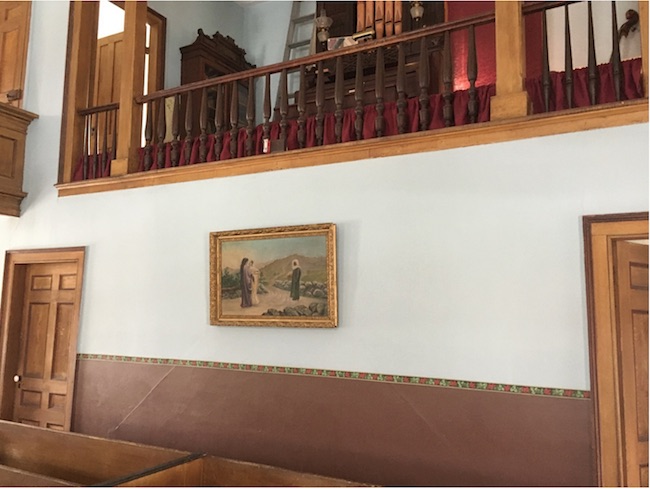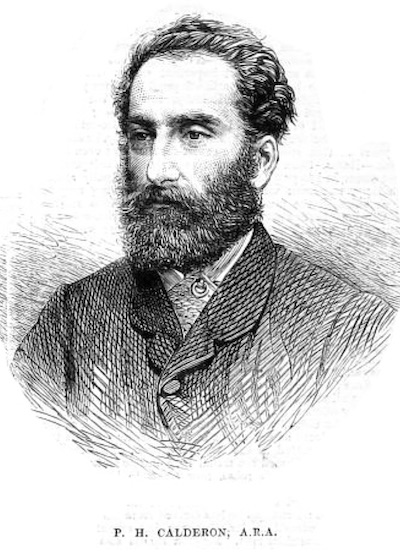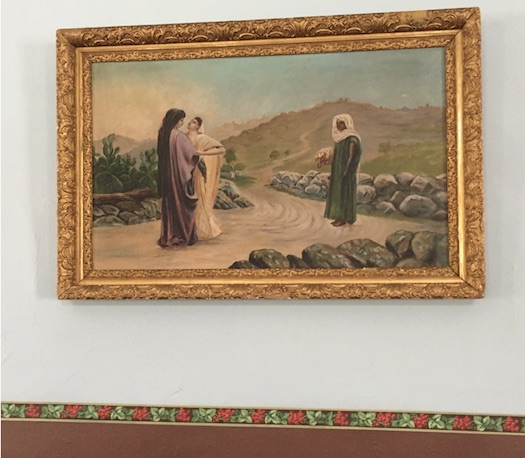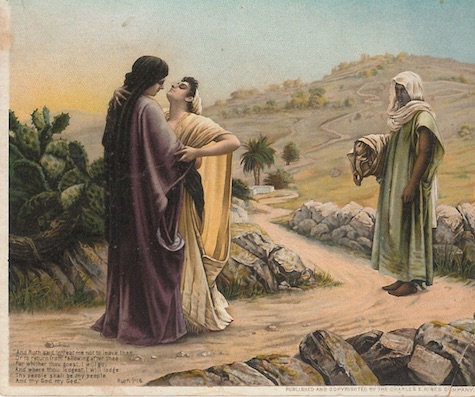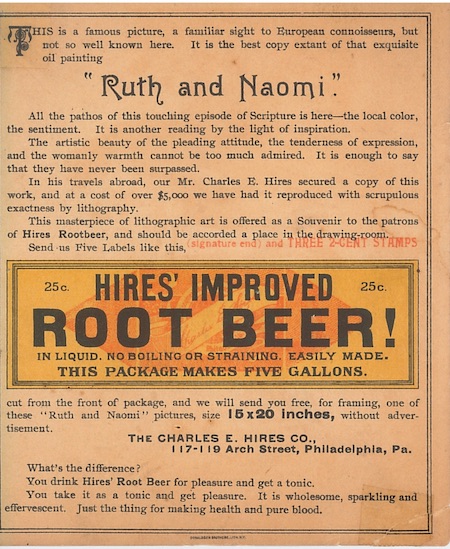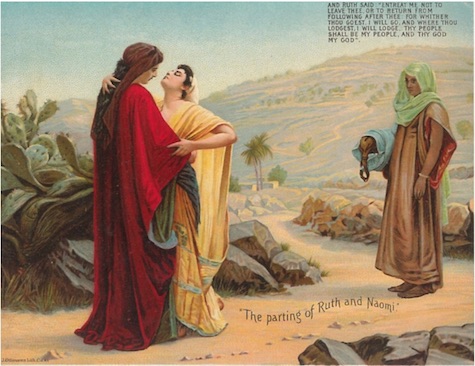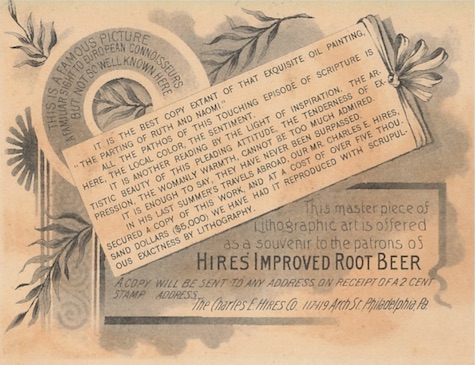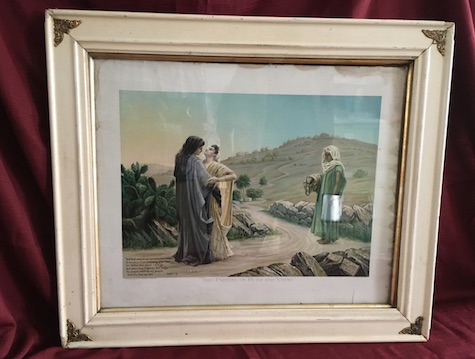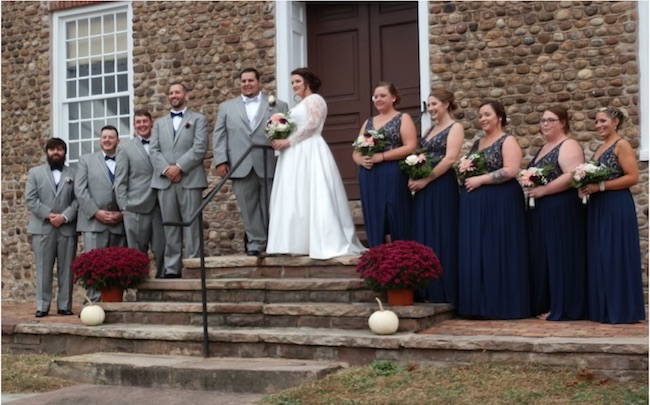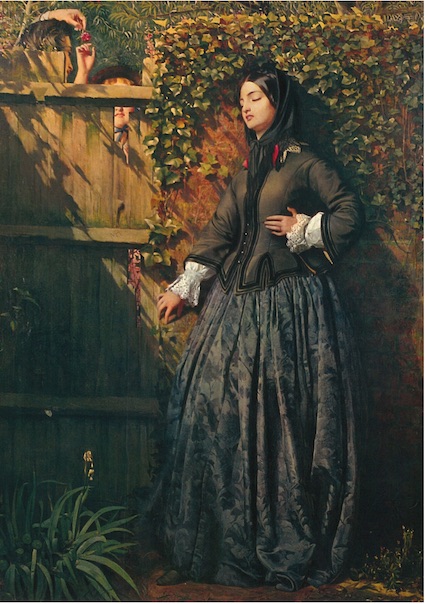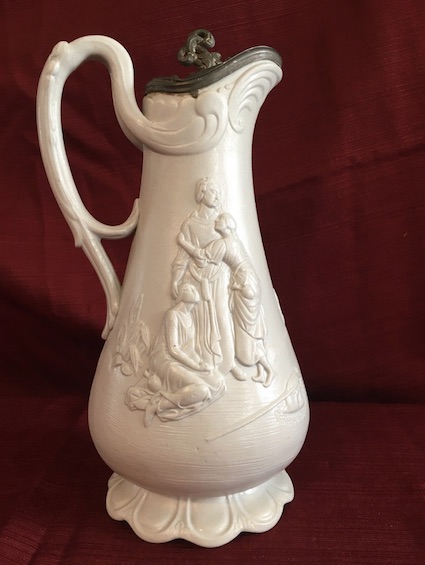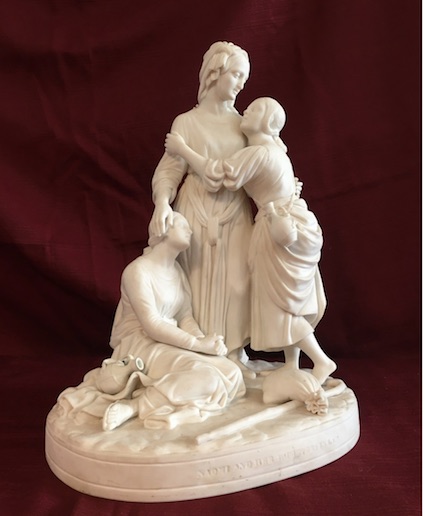Historic Childs: Popular Images of Yesteryear, Part 2 (The Parting of Ruth and Naomi)
By Doug Farley and Bill Lattin – Vol. 3 No. 1
GAINES – For a number of years this oil painting on canvas, measuring 22 by 36 inches, in its original frame, has hung in the back of the Cobblestone Church under the organ loft. It is correctly entitled, “The Parting of Ruth and Naomi,” and was undoubtedly done by a “Sunday Painter,” around 1890.
It is, of course, a copy of a famous painting from the late 19th century by Philip Hermogenes Calderon (1833-1898) who began his training in painting in London in 1850 and also studied in Paris in 1851, inspired by the Pre-Raphaelites. Throughout his career, his subjects were often historical, biblical or literary in theme.
This is a close-up picture of the painting in the Cobblestone Church.
We may ask, “How did this painting become so famous and popular back in the day?” Perhaps that question is answered by the accompanying chromo advertising card measuring 5×6 inches. The front shown here is what our Sunday Painter copied.
But it is the obverse side (back) that tells the story. Yes it was Charles E. Hires of Root Beer fame who truly brought this image into public recognition at the time. Every reproduction that Hires had printed carried the biblical quote from Ruth 1:16 (Old Testament):
“And Ruth said, Intreat me not to leave thee, or to return from following after thee: for whither thou goest, I will go; and where thou lodgest, I will lodge: thy people shall be my people, and thy God my God…”
Shown above is a second chromo lithographic advertising card. In fine print, at the lower left on the front of the card, it states: J. Ottmann Lith. Co. NY.” The earlier card shows “Donaldson Brothers Lith. NY.” The color scheme varies quite differently between the two printers. We also note that the obverse side of the second example, while carrying the same information as the first, is in its own format. We believe the colors in our first two examples are more true to the original painting by Calderon.
The framed print shown here is one of those 15×20 inch souvenirs. “Donaldson Brothers, NY” were the printers. Framing of this piece appears to be original from the 1890s. Credit on the print is: “Published and copyrighted by Charles E. Hires Company.” You may wonder, “Why does this picture hang in the Cobblestone Church?”
It was just fifty years ago that Bill Lattin, the first director of the Cobblestone Museum, made an inquiry. He noticed regularly placed nails in the church walls centered between windows and doorways. He asked Homer Brown, then in his eighties, “Why are those nails there?” Homer’s answer was, “There were pictures there.”
Now it seems Homer had attended the church as a child, prior to the Universalist Church being built at Albion in 1894. Those missing pictures and other furnishings were sold at an auction in 1934. Consequently, over the years, to make the interior of the Cobblestone Church more authentic in appearance, prints and this painting of appropriate subject matter for a Universalist Church have been acquired by the Cobblestone Museum.
The biblical quote on the print of Ruth and Naomi is sometimes used as a reading during wedding ceremonies. Therefore, our Sunday Painter’s work fits well for the Cobblestone Church which is often the scene for weddings, as shown above.
We include here a copy of one of Calderon’s most noteworthy and well-known paintings. It was completed in 1856 and is entitled, “Broken Vows.” It appears the beautiful young woman behind a fence, shown wearing a wedding band, overhears a tryst between her mate and another woman. We see obvious tension in the genre story. Likewise, in our painting of Ruth and Naomi, we also see some tension between them. Another similarity with these paintings is Calderon’s desire to show women wearing rich, silky clothing. “Broken Vows” is in the extensive art collection of the Tate Gallery in London.
The theme of Ruth and Naomi was a very popular subject matter, especially during the second half of the 19th century. We show a couple examples below From Bill Lattin’s antique collection.
This 10” tall pitcher with a salt glaze and pewter cover perhaps dates to the 1860s. It depicts Ruth clinging to Naomi while Orpah rests on the ground. The pitcher is marked on the bottom: “Naomi and her Daughters-in-Law.”
In this beautiful Parian-ware rendition we see Naomi, Ruth and Orpah. On the base it is entitled, “Naomi and Her Daughters-in-Law.” This figurine measures 13” tall and was published circa 1860. It is not uncommon in antiquing today to find images of just Ruth alone. This particular piece of statuary would have been a focal point in someone’s parlor 150 years ago.
Let us end with a more updated story concerning our subject. We are all familiar with the well-known celebrity, Oprah Winfrey. Allegedly, Oprah’s name was supposed to be Orpah, after the daughter-in-law of the biblical Ruth, but her doctor mixed up the letters and spelled the name Oprah when filling out her birth certificate. It was never corrected, so Oprah it is!




























